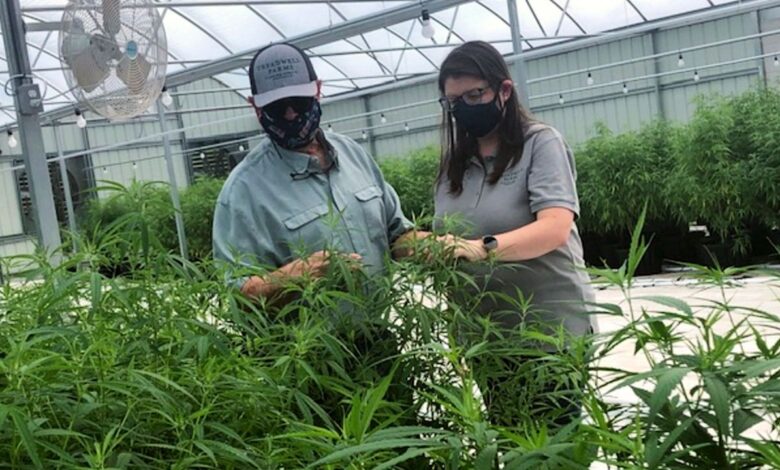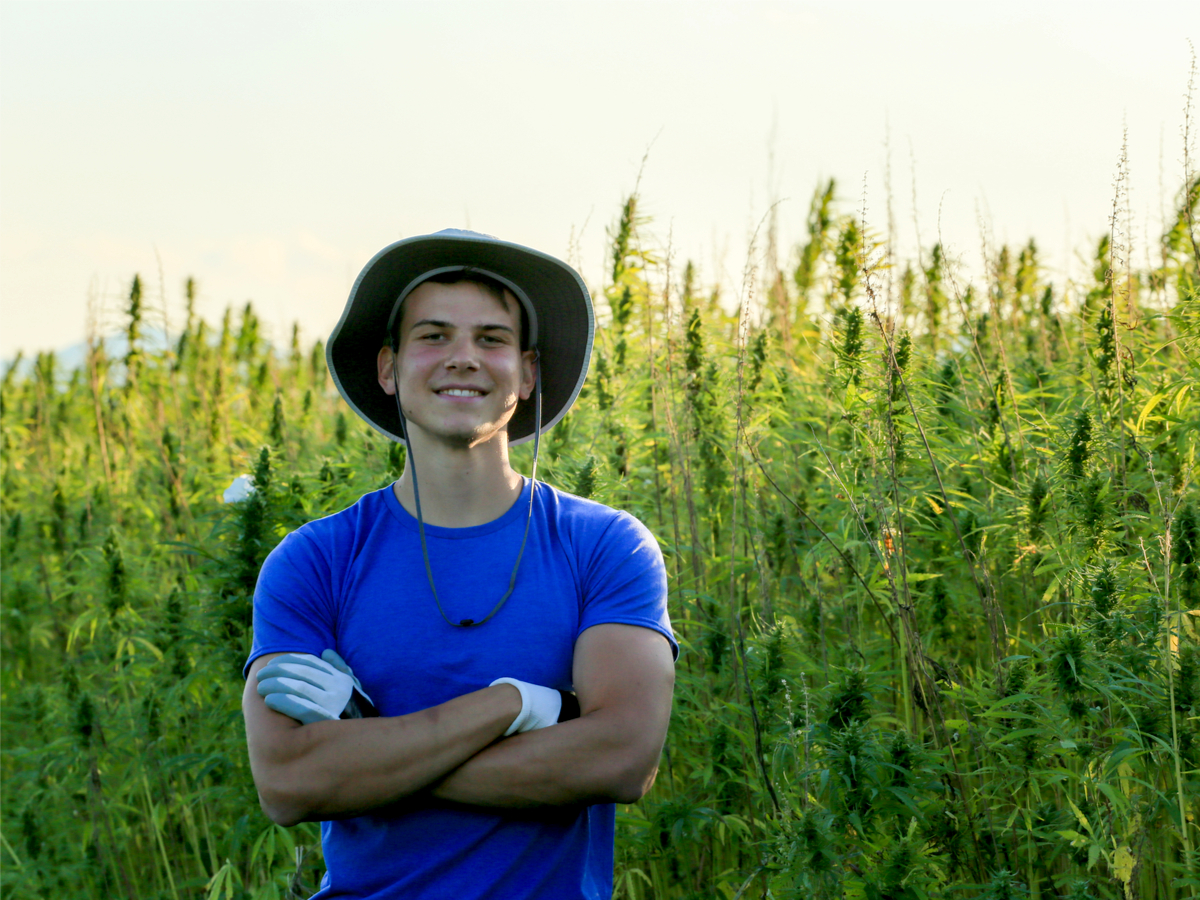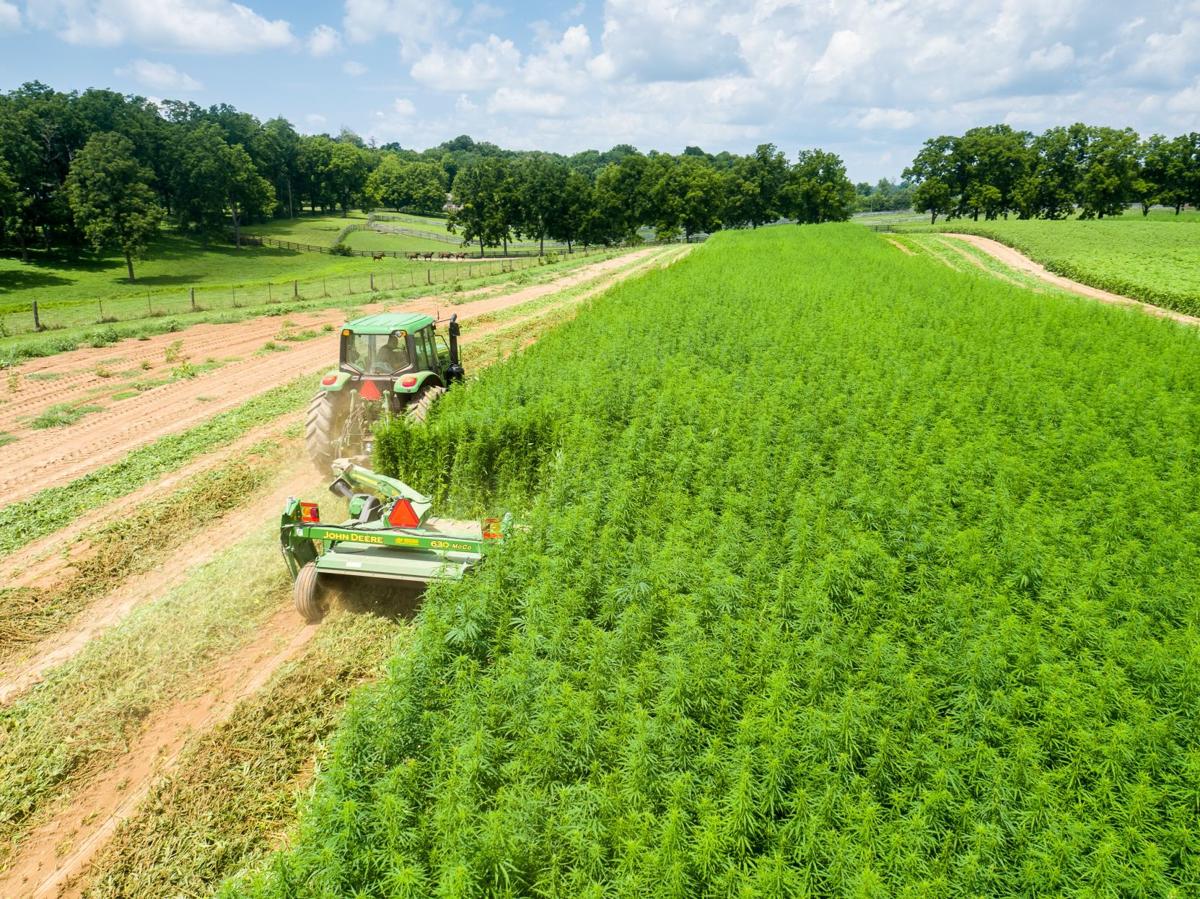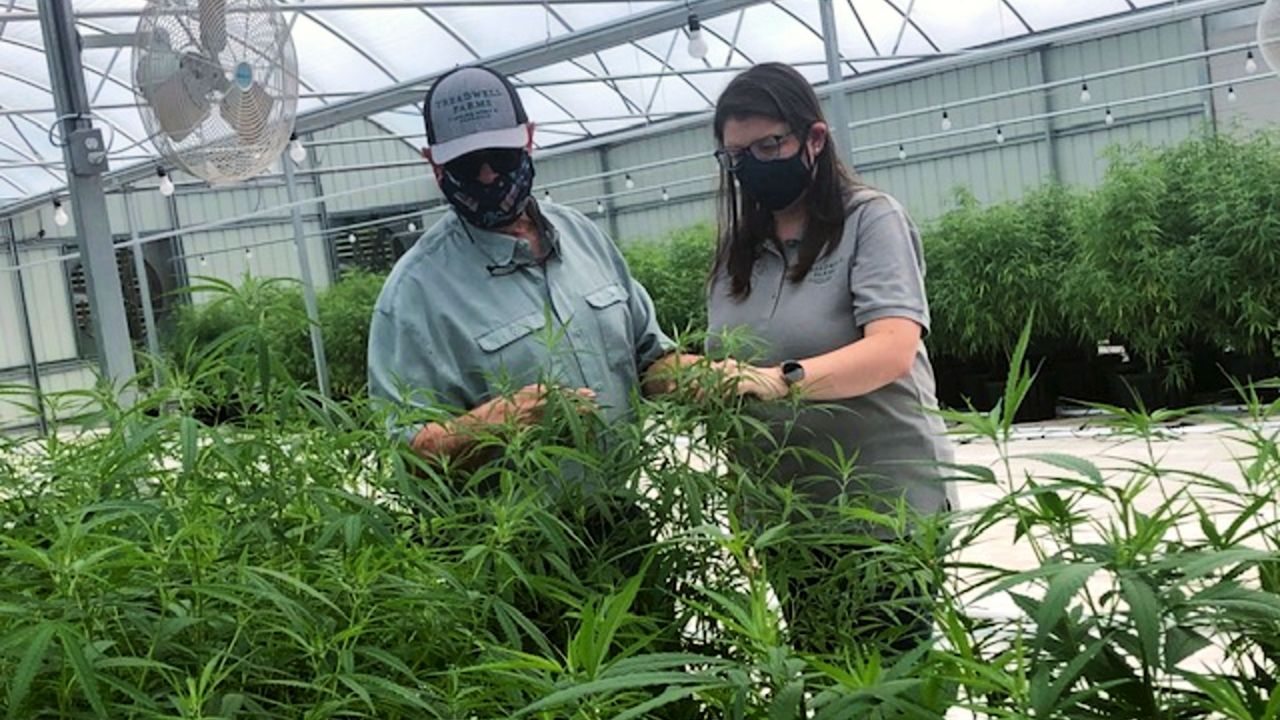
Hemp Farmers Face Uphill Battle A Tough Reality
Hemp farmers face uphill battle, navigating a complex landscape of regulatory hurdles, market volatility, and rising production costs. From stringent regulations across different regions to unpredictable market fluctuations, hemp cultivation presents unique challenges. This deep dive explores the multifaceted struggles of hemp farmers, highlighting the obstacles they encounter in their quest for profitability and sustainability.
The industry faces hurdles ranging from complex permitting processes and licensing requirements to the ever-evolving regulatory environment. Market volatility makes price prediction difficult, impacting farmer profitability. Furthermore, increasing production costs, limited infrastructure, fierce competition, and sustainability concerns add layers of complexity to the picture.
Regulatory Hurdles
Navigating the world of hemp farming often feels like navigating a complex maze of regulations. From local zoning ordinances to national legislation, farmers face a patchwork of rules that can vary significantly from one region to another. This inherent variability creates challenges for consistent practices and sustainable growth within the industry. Understanding these hurdles is crucial for farmers seeking to thrive in this burgeoning market.The regulatory landscape for hemp farming is constantly evolving, often with little to no lead time for farmers to adjust.
This dynamic environment requires constant vigilance and adaptation, making it a significant factor in the overall profitability and sustainability of hemp operations. Compliance with these regulations is paramount, as non-compliance can lead to costly penalties and operational disruptions.
Regulatory Variations Across Regions
The regulatory landscape for hemp farming varies dramatically across the globe. Countries and even states within countries often have different thresholds for permissible THC levels, restrictions on cultivation methods, and licensing requirements. These discrepancies impact the viability of hemp cultivation, as farmers need to understand and comply with the specific rules governing their location. The inconsistent regulations create barriers to trade and limit the potential for larger-scale, integrated hemp production chains.
Permitting Processes and Licensing Requirements
Permitting processes and licensing requirements for hemp farming operations can be complex and time-consuming. The application procedures often involve multiple stages, including documentation, inspections, and approvals from various government agencies. Variations in these processes further complicate the experience, as farmers must navigate different requirements and deadlines, leading to delays and added costs. Different regions may have differing standards for inspections, potentially creating a disproportionate burden on farmers.
Hemp farmers are facing a tough road, battling regulations and market fluctuations. It’s a constant struggle, especially when you consider the positive strides being made in other areas, like healthcare. For instance, the recent redesignation of the Stevens Points Breast Care Center, a testament to dedicated professionals and community support ( stevens points breast care center receives redesignation ), highlights the importance of vital services.
Despite these successes, hemp farmers still have a long way to go.
Compliance with Evolving Regulations
Keeping pace with evolving regulations is a significant challenge for hemp farmers. Laws and guidelines are frequently updated, requiring farmers to stay informed and adapt their practices accordingly. This necessitates continuous learning and investment in resources to ensure compliance, which can be a substantial financial burden for smaller operations. The rapid pace of change often makes it difficult for farmers to stay ahead of the curve, potentially leading to penalties or operational disruptions.
Comparison of Regulatory Frameworks
| Country | THC Limit (mg/g) | Permitted Cultivation Methods | Licensing Requirements |
|---|---|---|---|
| United States (Example: California) | 0.3% | Hydroponics, soil cultivation | State license, local permits |
| Canada | 0.3% | Various, including indoor and outdoor | Provincial licenses, potential federal oversight |
| Europe (Example: Netherlands) | 0.2% | Controlled cultivation | National permits, local approvals |
This table provides a simplified comparison. Actual regulations are more nuanced and subject to change. Specific conditions and limitations can vary greatly within each country, making it essential for hemp farmers to consult local authorities for detailed information.
Market Volatility: Hemp Farmers Face Uphill Battle
The hemp market, while burgeoning, is notoriously volatile. Price swings can significantly impact farmers’ profitability, making long-term planning challenging. Understanding the forces driving these fluctuations is crucial for hemp cultivators to navigate the landscape and adapt to changing conditions.The hemp market’s inherent volatility stems from a complex interplay of factors, including global economic trends, shifting consumer preferences, and the unpredictable nature of agricultural production.
Supply chain disruptions, governmental regulations, and even weather patterns can all contribute to price instability.
Factors Contributing to Price Fluctuations
Several factors contribute to the fluctuating prices in the hemp market. Agricultural output, often influenced by weather patterns and growing conditions, plays a significant role. Unexpected droughts, floods, or pest infestations can drastically reduce yields, leading to higher prices. Conversely, favorable growing seasons can result in surpluses, causing prices to plummet.Consumer demand for hemp-derived products also influences pricing.
The emergence of new applications, such as the growing demand for hemp-based textiles or beauty products, can boost demand and drive prices upward. Conversely, a lack of consumer interest or saturation in the market can lead to a decrease in prices.
Impact of Supply and Demand Dynamics
Supply and demand dynamics are the fundamental forces shaping hemp prices. When supply exceeds demand, prices tend to fall. Conversely, if demand outpaces supply, prices rise. Farmers must carefully monitor these trends to adjust their cultivation strategies and production levels accordingly. Maintaining a balance between production and market demand is crucial for long-term profitability.
Examples of Negative Market Trends
The hemp market has experienced periods of significant price drops, often linked to oversupply and reduced consumer demand. One example is the period following 2018 when increased cultivation led to an excess of hemp, driving prices down. The rapid introduction and saturation of some hemp-based products, without a corresponding increase in consumer interest, also contributed to price drops.
Hemp farmers are facing a tough time, navigating fluctuating regulations and market demands. Meanwhile, Oshkosh is looking at exciting new development opportunities near the Fox River, like oshkosh eyes new development near fox river , which could potentially bring economic benefits to the area. Despite these potential advancements, hemp farmers still face a significant uphill battle in securing sustainable markets and fair pricing.
These trends highlight the need for careful market analysis and strategic planning to mitigate risks.
Strategies for Mitigating Risks
Hemp farmers can adopt various strategies to mitigate the risks associated with market volatility. Diversifying product lines and exploring niche markets can help reduce reliance on a single product or market. Developing strong relationships with buyers and establishing direct-to-consumer sales channels can provide greater price stability. Investing in research and development to improve cultivation techniques and product quality can also contribute to greater resilience.
Table: Major Factors Influencing Hemp Market Prices (2018-2023)
| Year | Major Factor | Impact on Price |
|---|---|---|
| 2018 | Increased cultivation, reduced demand | Significant price drop |
| 2019 | Emerging consumer interest in CBD | Moderate price increase |
| 2020 | Global economic uncertainty, supply chain disruptions | Fluctuating prices |
| 2021 | Increased demand for hemp-based textiles | Price increase |
| 2022 | Global economic recession, inflation | Price volatility |
| 2023 | Increased hemp-derived product innovation | Moderate price increase, but uncertain long-term trend |
Production Costs
Hemp farming, like any other agricultural venture, faces significant production costs. These costs are influenced by various factors, from the price of seeds and fertilizers to labor expenses and operational overhead. Understanding these costs is crucial for farmers to make informed decisions and ensure profitability in a competitive market.
Hemp farmers are facing a tough road, navigating fluctuating markets and persistent challenges. But perhaps the future of sustainable energy holds a key to a brighter future for them, with alternative materials like hemp fiber potentially revolutionizing the industry. the future of sustainable energy looks to alternative materials for construction and other uses. Even so, hemp farmers still face the uphill battle of establishing reliable markets and adapting to changing demands.
Rising Input Costs
The escalating price of inputs is a major concern for hemp farmers. Seed costs, for instance, have shown a considerable upward trend in recent years, directly impacting the initial investment required for cultivation. Fertilizers, crucial for healthy plant growth, have also experienced price increases, reflecting global supply chain pressures and fluctuating commodity markets. The cost of labor, essential for various farming tasks, from planting and harvesting to processing, is another rising expense.
These factors combine to create a challenging financial landscape for hemp cultivators.
Challenges in Securing Resources
Securing affordable and reliable resources is a persistent hurdle for hemp farmers. Fluctuations in global commodity markets can lead to unpredictable price swings, making it difficult to budget accurately. Farmers often face competition for limited supplies of high-quality seeds and fertilizers, potentially leading to higher prices or delayed deliveries. Finding reliable and skilled labor can also be challenging, especially in areas with limited agricultural experience.
Operational Expenses
Hemp farming entails various operational expenses beyond the cost of inputs. These expenses encompass equipment maintenance, repair, and replacement, as well as irrigation costs, pest and disease control measures, and transportation for harvesting and delivery. Proper land management, including soil preparation and upkeep, is another crucial aspect that contributes to the overall operational expenses. These diverse costs can significantly impact the profitability of a hemp farm.
Cost-Saving Strategies
Several strategies can help hemp farmers mitigate production costs. Optimizing planting techniques to reduce seed usage and explore alternative, lower-cost fertilizers are key steps. Developing effective pest management strategies, rather than relying solely on chemical solutions, can lower expenses and enhance sustainability. Improving efficiency in harvesting and processing can reduce labor costs and increase output per unit of time.
Additionally, exploring opportunities for vertical integration, such as processing the hemp into finished products, can increase profitability and lower the reliance on external suppliers.
Average Production Costs (Estimated)
| Region | Average Cost per Acre (USD) |
|---|---|
| North America | $1,500 – $2,500 |
| Europe | $1,800 – $3,000 |
| Asia | $1,000 – $2,000 |
Note: These figures are estimations and can vary considerably based on specific farming practices, regional variations, and input costs.
Infrastructure and Technology

Hemp farming, while promising, faces significant hurdles in its current infrastructure and technological landscape. Outdated equipment, limited access to advanced techniques, and inadequate storage solutions hinder the industry’s growth and profitability. These challenges are particularly acute for smaller farms, which often lack the resources to invest in modern technology. Addressing these infrastructural limitations is crucial for the long-term viability and expansion of the hemp industry.The existing infrastructure often struggles to keep pace with the evolving demands of hemp cultivation.
This includes difficulties in efficient transportation of raw materials and finished products, as well as a lack of standardized storage facilities that meet the unique requirements of hemp. This necessitates a proactive approach to develop and implement solutions that will improve the efficiency and sustainability of the industry.
Limitations of Current Infrastructure and Technology
Current hemp farming infrastructure often lacks the capacity for efficient processing and handling of large volumes of hemp. This frequently results in significant losses due to spoilage, damage during transport, or improper storage. Furthermore, the reliance on traditional farming methods restricts yield potential and makes it challenging to adapt to changing market conditions. Existing technology, while present, often lacks the precision and scalability required for large-scale, profitable hemp cultivation.
Innovative Technologies Enhancing Hemp Cultivation
Several innovative technologies offer potential solutions for improving hemp cultivation efficiency. Precision agriculture techniques, like GPS-guided tractors and variable-rate fertilizer application, can optimize resource use and minimize environmental impact. Automated harvesting and processing equipment can improve speed and reduce labor costs. Drone technology can monitor crop health, detect diseases early, and identify areas needing targeted interventions.
Accessibility and Affordability for Small-Scale Farmers
Access to advanced farming techniques can be a major barrier for small-scale hemp farmers. The high upfront costs of implementing technologies like precision agriculture systems can make them inaccessible. Government subsidies, financial incentives, and partnerships between large-scale producers and smaller farms could help bridge this gap. Facilitating access to training and educational resources is also critical for enabling smaller farmers to effectively utilize advanced technologies.
Improved Infrastructure for Transport and Storage
The transportation and storage of hemp products, particularly those intended for processing into various end-products, often lack standardization. This leads to quality issues and logistical challenges. Investing in specialized storage facilities with controlled temperature and humidity conditions can ensure product quality and prevent spoilage. Establishing clear transportation standards and protocols will minimize damage during transit and ensure the timely delivery of products.
Potential Impact of Technology Adoption on Hemp Farming Productivity
| Technology | Potential Impact on Productivity | Examples |
|---|---|---|
| Precision Agriculture | Increased yield by 15-25%, reduced input costs by 10-15% | GPS-guided tractors, variable-rate fertilizer application, soil sensors |
| Automated Harvesting | Reduced labor costs by 20-30%, improved harvest speed by 15-25% | Automated harvesters, robotic arms for processing |
| Drone Technology | Early disease detection, optimized irrigation, improved crop monitoring | Drone-based crop monitoring, aerial spraying |
| Specialized Storage | Reduced spoilage by 10-20%, improved product quality | Cold storage facilities, humidity-controlled warehouses |
Improved infrastructure and the adoption of advanced technologies are crucial for the long-term success of the hemp industry.
Competition and Consolidation

The hemp industry is experiencing a period of significant growth, attracting both seasoned agricultural players and newcomers. This burgeoning interest, however, is accompanied by a complex interplay of competition and consolidation, impacting the profitability and sustainability of hemp farming operations. Understanding these dynamics is crucial for farmers seeking to navigate this evolving landscape.The increasing number of players vying for market share necessitates a strategic approach to cultivation, processing, and distribution.
Farmers need to adapt to the evolving demands of the market and find ways to differentiate their products to stand out from the competition. Consolidation, on the other hand, presents both opportunities and challenges. While larger operations may leverage economies of scale and achieve greater market reach, smaller farms face the pressure of adapting to the changing dynamics and ensuring their continued viability.
Competitive Landscape Analysis
The hemp industry is witnessing a surge in participation from various actors, from established agricultural businesses to startups. This influx of competitors has led to a heightened level of competition, impacting pricing strategies and market share. This competitive environment requires farmers to develop innovative strategies to remain competitive and profitable.
Impact of Consolidation on Hemp Processing and Distribution
Consolidation in the hemp processing and distribution sectors can significantly alter the market dynamics. Larger companies often gain control over supply chains, leading to potentially higher prices for raw materials. This can impact the profitability of smaller farms, forcing them to adapt their strategies or potentially seek partnerships with larger companies.
Pricing and Market Share
Competition directly influences pricing and market share for hemp farmers. Overabundance of supply relative to demand can drive down prices, necessitating strategies to maintain profitability. Market share is impacted by factors like product quality, production efficiency, and brand recognition. Differentiation becomes critical in a competitive environment.
Strategies for Large-Scale and Small-Scale Operations
Large-scale hemp farming operations frequently adopt strategies focused on economies of scale. This often involves maximizing production efficiency through advanced technologies, optimized logistics, and large-scale processing facilities. Small-scale operations, conversely, may concentrate on niche markets, emphasizing product quality, sustainable practices, and direct-to-consumer sales channels. This allows them to offer unique products and connect with customers seeking ethically sourced or specialty hemp-based products.
Market Share of Major Hemp Producers (Estimated)
| Producer | 2021 Market Share (%) | 2022 Market Share (%) | 2023 Market Share (%) |
|---|---|---|---|
| Company A | 25 | 28 | 29 |
| Company B | 20 | 18 | 19 |
| Company C | 15 | 17 | 16 |
| Company D | 10 | 12 | 11 |
| Other Producers | 30 | 25 | 25 |
Note: This table represents estimated market share data. Actual figures may vary based on specific reporting methods and criteria.
Sustainability and Environmental Concerns

Hemp cultivation, while offering a multitude of potential benefits, must be approached with a strong focus on sustainability. Ignoring environmental considerations could jeopardize the long-term viability of the industry. A careful balance between economic gain and environmental protection is crucial for the responsible development of hemp farming.Hemp’s potential to be a sustainable alternative to conventional crops hinges on its ability to minimize its environmental footprint.
This requires a thorough understanding of its environmental impact and the implementation of responsible farming practices. The future of hemp agriculture rests on the shoulders of farmers committed to ecological stewardship.
Importance of Sustainable Hemp Farming Practices
Sustainable hemp farming practices are essential for minimizing the negative environmental impacts of cultivation. These practices ensure long-term soil health, biodiversity, and reduce reliance on harmful inputs. By adopting sustainable methods, hemp farmers contribute to a healthier environment and a more resilient industry.
Environmental Impact of Hemp Cultivation
Hemp, often lauded for its rapid growth and potential to sequester carbon, can have a significant impact on the environment, both positive and negative. Proper cultivation practices are crucial to maximizing the positive impacts and mitigating the negative ones.
- Carbon sequestration: Hemp’s ability to absorb carbon dioxide from the atmosphere is a significant environmental benefit. Well-managed hemp fields can contribute to mitigating climate change. Studies show hemp’s carbon sequestration potential is higher than some other crops, like corn.
- Water usage: Hemp’s water usage varies significantly based on climate and cultivation techniques. Efficient irrigation systems and drought-resistant hemp varieties can minimize water consumption, especially in arid regions. Careful water management is key to sustainability.
- Soil erosion: Proper soil management techniques, including crop rotation and cover cropping, can help prevent soil erosion, preserving valuable topsoil and maintaining soil fertility. Erosion control measures are essential to maintain long-term productivity.
Role of Environmental Regulations in Shaping Hemp Farming Practices
Environmental regulations play a crucial role in guiding hemp farming practices towards sustainability. These regulations often dictate permitted farming methods, limiting the use of harmful pesticides and fertilizers, and setting standards for water usage. Compliance with these regulations is essential for long-term industry success and community acceptance. The framework of regulations can significantly impact the profitability and sustainability of hemp farming.
Examples of Sustainable Farming Techniques Used by Successful Hemp Farmers
Numerous sustainable farming techniques are employed by successful hemp farmers. These techniques focus on minimizing environmental impact while maximizing crop yields.
- Crop rotation: Rotating hemp with other crops can improve soil health and reduce the buildup of pests and diseases.
- Cover cropping: Cover crops can help improve soil structure, reduce erosion, and enhance nutrient retention.
- Integrated pest management (IPM): IPM strategies emphasize the use of natural pest control methods to minimize the need for synthetic pesticides.
- Composting and nutrient management: Using compost and other organic materials can improve soil health and reduce the reliance on synthetic fertilizers.
Environmental Benefits and Drawbacks of Hemp Compared to Other Crops
The environmental impact of hemp cultivation needs to be compared with that of other crops to assess its overall sustainability. The table below provides a concise overview of the key considerations.
| Characteristic | Hemp | Conventional Crops (e.g., Soybeans, Corn) |
|---|---|---|
| Carbon Sequestration | High | Moderate to Low |
| Water Usage | Moderate (with efficient irrigation) | High (often) |
| Soil Erosion | Low (with proper practices) | Moderate to High (depending on practices) |
| Pesticide Use | Potentially Lower (with IPM) | Often High |
| Nutrient Runoff | Lower (with organic practices) | Higher (with synthetic fertilizers) |
Access to Capital and Financing
Hemp farming, despite its potential, faces significant challenges in securing the necessary capital for operations. The industry is still relatively nascent, and traditional lenders often view hemp cultivation with skepticism due to the complex regulatory landscape and the perceived risk. This uncertainty translates directly into limited access to financing options, hindering growth and innovation within the sector.The lack of readily available funding sources impacts every aspect of hemp farming, from initial land acquisition and equipment purchase to ongoing operational costs and research & development.
This capital constraint often forces farmers to rely on personal savings, loans from family and friends, or less favorable, high-interest loans from alternative financial institutions, creating an uneven playing field.
Financial Resource Limitations
Hemp farmers often struggle to secure traditional bank loans. Lenders are frequently unfamiliar with the specifics of hemp cultivation, leading to hesitation and stringent requirements. This lack of understanding translates into a reluctance to provide the necessary financing, making it difficult for farmers to scale their operations. Furthermore, the perceived risk associated with the industry, due to fluctuating market prices and regulatory uncertainties, contributes to the challenge of securing financing.
Available Financial Resources
Several resources can potentially support hemp farming ventures. These include:
- Grants and Subsidies: Governmental grants and subsidies, often targeted at promoting sustainable agriculture, may offer financial support for hemp farmers. These resources can help offset operational costs, especially for early-stage operations or farmers focused on innovative practices.
- Venture Capital and Angel Investors: Emerging hemp-related businesses and projects might attract investment from venture capital firms or angel investors. These investors are often drawn to companies with strong market potential and a clear roadmap for growth.
- Crowdfunding Platforms: Crowdfunding platforms provide a unique avenue for hemp farmers to raise capital from a broad base of supporters. This can be particularly valuable for smaller farms or those with innovative ideas looking to scale.
- Specialized Hemp Finance Companies: As the hemp industry matures, dedicated financial institutions or investment firms specializing in the sector are emerging. These entities may be better equipped to understand the unique financial needs of hemp farmers and provide tailored solutions.
Challenges of Accessing Loans and Grants, Hemp farmers face uphill battle
Accessing loans and grants for hemp farmers involves several hurdles. Regulatory uncertainties and inconsistent state laws pose a significant barrier. The lack of established industry standards and metrics makes it difficult for lenders to assess risk accurately. Furthermore, the limited historical data on hemp farming profitability can make securing loans based on traditional financial models challenging.
Need for Tailored Financial Solutions
The hemp industry requires tailored financial solutions to address its unique needs. These solutions should consider the specific challenges of hemp farming, such as fluctuating market prices, regulatory uncertainties, and the relative novelty of the industry. Financial institutions and government agencies need to develop specialized programs that provide accessible and affordable financing options for hemp farmers. This might include educational programs, mentorship opportunities, and simplified loan applications tailored to the industry’s requirements.
Financial Assistance Programs
| Region | Program Name | Description |
|---|---|---|
| United States | USDA Farm Service Agency (FSA) Loans | Offers various loan programs to support agricultural operations, including hemp. Farmers must meet specific eligibility criteria and demonstrate the financial viability of their hemp farming venture. |
| Canada | Federal Government Agricultural Programs | Provides various support programs for agricultural producers, including potential grants and loans tailored for hemp cultivation. |
| Europe | EU Agricultural Policy | Includes grants and subsidies to support sustainable agriculture practices, which might encompass hemp farming. Specific programs and availability can vary by country. |
Note: The availability and specific details of financial assistance programs can vary significantly by region and may be subject to change. It is crucial for hemp farmers to research and understand the programs offered in their specific region.
Concluding Remarks
In conclusion, hemp farming is a challenging venture. The regulatory landscape, market fluctuations, and high production costs create a tough environment for farmers. Addressing these issues, including fostering better infrastructure, access to financing, and supportive regulations, is crucial for the future of hemp farming. While hurdles abound, the potential for growth in this industry remains substantial, and innovation and collaboration can pave the way for a more sustainable and profitable future for hemp farmers.

